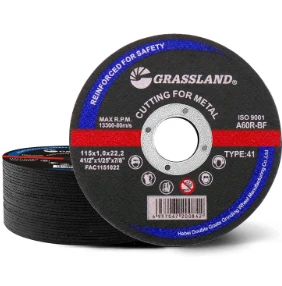The Importance of Wheel Cut Off Metal in Modern Manufacturing
In the realm of manufacturing, precision and efficiency are paramount. One of the integral components in achieving high levels of both factors is the use of wheel cut off metal techniques. This method not only enhances production speed but also ensures the quality and durability of the final products. As industries evolve and technological advancements continue, understanding the significance of wheel cut off metal becomes increasingly critical.
What is Wheel Cut Off Metal?
Wheel cut off metal refers to a technique used in the manufacturing process where metal is cut or separated using a rotating wheel or blade. This method is predominantly utilized for cutting through various metallic materials, including steel, aluminum, and copper, among others. The cutting wheels, often made of abrasive materials, operate at high speeds, allowing for quick and accurate separation of metal.
Advantages of Wheel Cut Off Metal
1. Precision and Accuracy One of the primary advantages of using wheel cut off techniques is the precision it offers. The rotating blade can create clean cuts with minimal burrs, reducing the need for extensive finishing processes. This level of accuracy is crucial in industries where tight tolerances are necessary, such as the aerospace and automotive sectors.
2. Efficiency in Production The speed at which wheel cut off metal operates significantly enhances productivity in manufacturing environments. Traditional cutting methods, such as sawing, can be time-consuming and labor-intensive. In contrast, wheel cutting techniques drastically reduce production time, allowing manufacturers to meet tight deadlines without compromising on quality.
3. Versatility Wheel cut off metal can be employed in various applications. From small-scale workshops to large factories, this technique is suitable for cutting different types of metals and thicknesses. Whether it's for creating intricate designs in sheet metal or slicing through heavy-duty components, the adaptability of wheel cutting makes it a favored choice in diverse manufacturing processes.
4. Cost-Effectiveness Although the initial investment in wheel cutting machinery may be higher compared to traditional methods, the long-term cost-effectiveness is significant. The reduction in labor costs, waste material, and time translates into lower overall production expenses. Moreover, the precision of cuts reduces the likelihood of errors and rework, further enhancing the financial viability of this technique.
wheel cut off metal

Applications in Various Industries
The applications of wheel cut off metal are vast and varied. In the automotive industry, it is commonly used to fabricate components such as chassis, brake parts, and engine components. The ability to create precise cuts ensures that all parts fit together seamlessly, which is crucial for vehicle safety and performance.
In construction and building, wheel cut off techniques are employed for cutting rebar, piping, and other structural elements. This method not only expedites the construction process but also maintains the structural integrity of the materials used.
Additionally, in the electronics and electrical sectors, precise metal cutting is essential for creating housings and circuit boards. The reliability of cut off metal processes ensures that components are manufactured to the stringent specifications required for electronic devices.
Future Trends
As technology progresses, the methods and materials used in wheel cut off metal processes are also evolving. Innovations such as computerized Numerical Control (CNC) machines are enhancing the precision and efficiency of metal cutting. These advanced technologies enable manufacturers to automate their processes, further reducing production times while increasing consistency in quality.
Furthermore, sustainability is becoming a crucial focus in manufacturing. Companies are researching eco-friendly cutting materials and methods, aiming to minimize waste and energy consumption. The integration of laser cutting technologies with traditional wheel cut off methods also hints at a future where cutting processes are both advanced and sustainable.
Conclusion
In conclusion, wheel cut off metal plays a vital role in modern manufacturing, providing efficiency, precision, and versatility across various industries. As technological advancements continue to shape the manufacturing landscape, the importance of mastering these cutting techniques will only grow. Understanding and implementing wheel cut off metal can lead to enhanced productivity and superior product quality, positioning businesses for success in an increasingly competitive market.
Post time:Dec - 11 - 2024

















